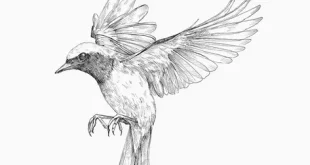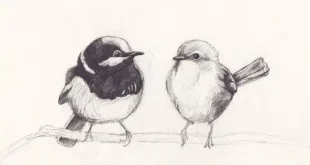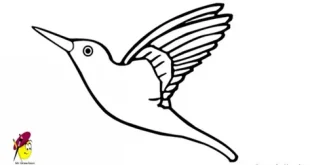Sanderling Birds: The Tiny Wanderers of the Shoreline
Sanderling Birds are small, energetic shorebirds known for their constant scurrying along sandy beaches. Recognizable by their pale plumage and lively movements, these fascinating birds travel thousands of miles each year, making them one of the most remarkable migratory species in the world. In this article, we’ll explore their appearance, habitat, diet, behaviors, and conservation status.
1. Introduction to Sanderling Birds
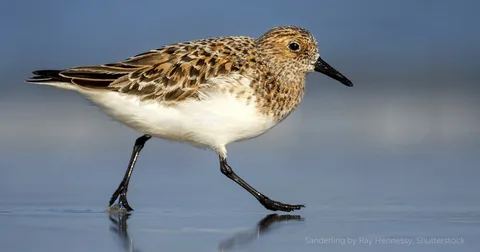
Sanderlings (Calidris alba) are small wading birds that belong to the sandpiper family (Scolopacidae). They are widely found along sandy beaches across the globe and are often seen in flocks, darting back and forth as waves roll in and out.
These birds are unique because they breed in the Arctic tundra but spend their winters along coastlines on almost every continent. Despite their tiny size, weighing only 40–100 grams, Sanderlings are exceptional long-distance travelers, often covering up to 10,000 miles during their annual migrations.
2. Sanderling Birds Physical Appearance and Characteristics
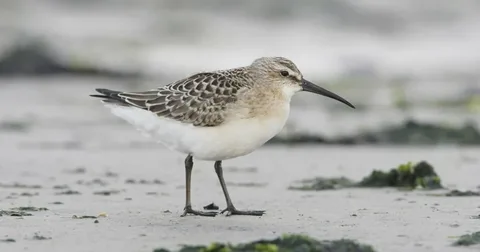
Sanderlings have a distinctive, delicate appearance that sets them apart from other shorebirds.
Size and Shape
- Length: 7 to 8 inches (18–20 cm)
- Wingspan: 13 to 14 inches (33–36 cm)
- Weight: 1.5 to 3.5 ounces (40–100 grams)
Plumage
- In breeding season, they display a reddish-brown back mixed with black markings.
- In non-breeding season, their plumage turns a soft pale gray and white, blending perfectly with sandy beaches.
Behavior
They run rapidly along shorelines, chasing receding waves to pick up tiny invertebrates before retreating as the tide comes in. Their constant motion makes them look like little mechanical toys on the sand.
3. Habitat and Global Distribution
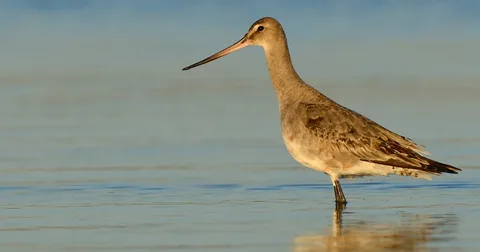
Sanderlings are among the most widespread shorebirds in the world.
Breeding Grounds
- Nests are small depressions in the ground lined with grass and moss.
Wintering Grounds
In winter, Sanderlings migrate to coastal regions worldwide, including:
- North and South America
- Europe and Africa
- Asia and Australia
They prefer sandy beaches, tidal flats, and coastal lagoons where they can easily find food. In some places, they share beaches with larger flocks of sandpipers, plovers, and gulls.
4. Diet and Feeding Behavior
Sanderlings are opportunistic feeders that rely on the abundance of tiny creatures living along shorelines.
Primary Diet
- Small crustaceans
- Mollusks
- Worms
- Tiny insects
- Occasionally, algae and plant material Their feeding behavior is timed perfectly with changing tides—they chase retreating waves to grab exposed organisms and then dash back as the water returns.
5. Conservation and Threats
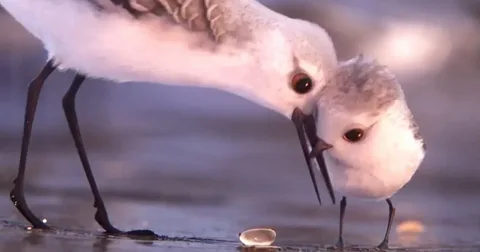
While Sanderlings are currently classified as Least Concern by the International Union for Conservation of Nature (IUCN), their populations face growing threats due to human activity and climate change.
Major Threats
- Habitat Loss: Coastal development and tourism reduce available feeding and nesting grounds.
- Climate Change: Rising sea levels threaten beaches where they feed and rest.
- Disturbance: Human activity, vehicles, and pets often scare birds away from prime feeding areas.
- Decline in Prey: Pollution and overfishing affect the populations of small invertebrates they rely on.
Conservation Efforts
- Protection of migratory routes and breeding grounds
- Establishment of protected coastal reserves
- Raising awareness among beachgoers to avoid disturbing nesting and feeding zones
Given their incredible migration patterns, international cooperation is vital for conserving Sanderlings.
Conclusion
Sanderlings may be small, but their lifestyle is extraordinary. From breeding in the Arctic tundra to spending winters on beaches around the globe, these birds showcase remarkable endurance and adaptability. Their playful dance along the shorelines makes them a favorite among birdwatchers and nature lovers alike.
These tiny wanderers remind us that even the smallest creatures can achieve astonishing journeys.
Sanderling Birds in Coastal Habitats Sanderling Birds
Sanderling birds are small shorebirds that capture attention with their bright plumage and energetic behavior along sandy coastlines. These birds are often seen running in quick, sharp movements as they search for small invertebrates hidden beneath shifting waves. Their pale feathers help them blend into the coastal environment, offering protection from predators while enhancing their graceful appearance. Sanderlings are known for their long migrations that stretch across continents, demonstrating remarkable endurance and survival skills in challenging environments. They spend much of their time foraging on open beaches, where their rapid pace helps them find food more effectively. Many birdwatchers appreciate their calm nature, making them a favorite species for observing in both summer and winter seasons.
Behavior, Diet, and Seasonal Movement
The behavior of Sanderling birds is shaped by their constant need to adapt to changing tides and weather conditions as they move along the coastline. Their diet mainly includes marine worms, crustaceans, and small mollusks that they skillfully capture with quick and precise pecking movements. These birds migrate thousands of miles each year, traveling from Arctic breeding grounds to warmer coastal regions during winter months. Their seasonal movements highlight their incredible navigation abilities and strong instincts for survival in diverse habitats. Sanderlings often gather in large flocks, creating impressive scenes that reflect their social nature and reliance on teamwork. Their presence on beaches offers valuable insight into coastal ecosystems, making them essential indicators of environmental health in many regions today.
 Birds Drawing Birds Drawing
Birds Drawing Birds Drawing

